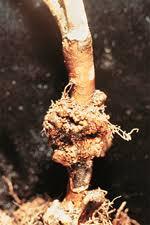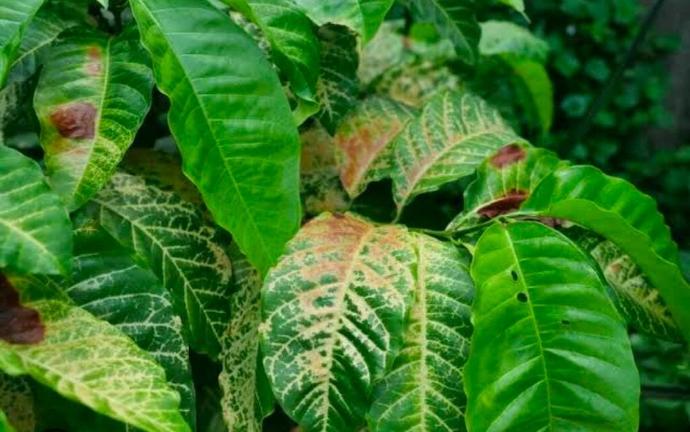Multi-colour croton Plant
Multi-Color Croton, also known as Codiaeum variegatum, is an outdoor shrub with colorful foliage. Plant in well-draining soil with full sun exposure. Water consistently and prune to shape the shrub. Fertilize during the growing season for vibrant and healthy foliage.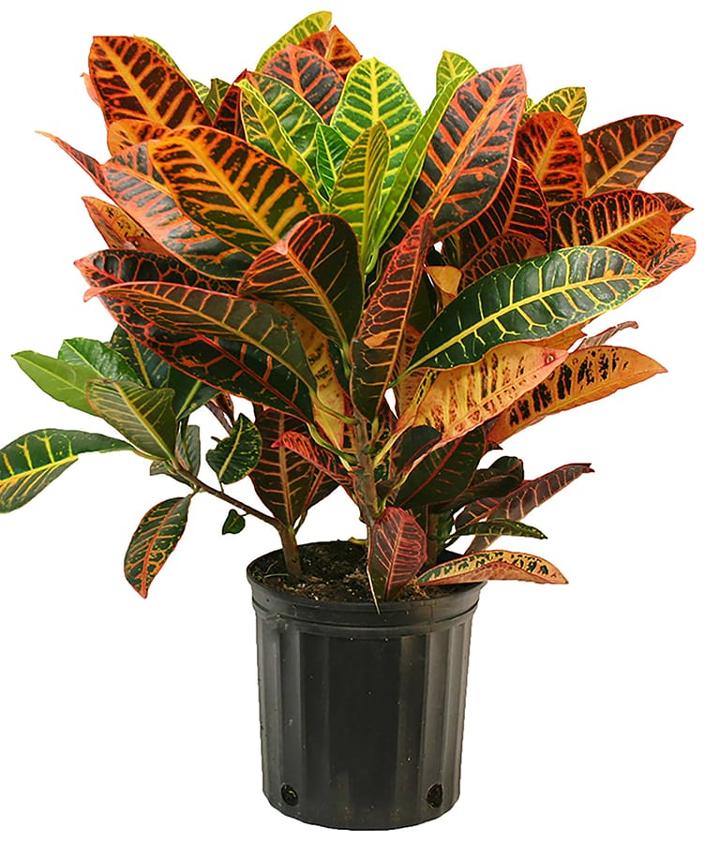
Habit
Shrub
Height
0.5-1 m
Growth
Fast
Soil
Well Drained, loamy
Shade
Full Sun
Moisture
Moist
Edible
No
Medicinal
No
Origin
Southeast Asia
Climatic Condition
Tropical, Subtropical
Temperature (°)
20-30°C
Humidity (%)
60-80%
Potting media
Loamy, peat
Fertilizers
Balanced NPK (10-10-10)
Watering
Regular
Plant Weight
100-150 g
Flowering Time
Spring, Summer
Soil Ph level
5.5 - 6.5
Water Ph level
6.0 - 7.0
Soil EC
1-2 dS/m
Yield Per Plant
Ornamental shrub
NPK ratio
10:10:10
life Span
Perennial
Health Benefits
Ornamental, decorative
Suggested Grow Media or Potting Mix ?
40% peat moss, 30% perlite, 30% compost
Suggested Fertigation/Fertilizers
Fertilize every 2 weeks with a balanced, water-soluble fertilizer.
Common Diseases and Remedies
Anthracnose, Crown gall.
Dead spots on the foliage .
Neem oil, No cure once galls begins to form.
HEALTH BENEFITS
⚠️ Toxicity Warning: Croton plants are toxic if ingested. However, they have been used in traditional medicine for skin ailments and as a mild laxative in controlled doses.
What Is An Multi colour croton?
Crotons (Codiaeum variegatum) are known for their vibrant and multicolored foliage. They come in various shades, including red, yellow, orange, and green. These tropical plants can add a splash of color to your garden or indoor space, thriving in well-draining soil and warm temperatures. Careful attention to sunlight and watering will help maintain the vivid colors of their leaves.
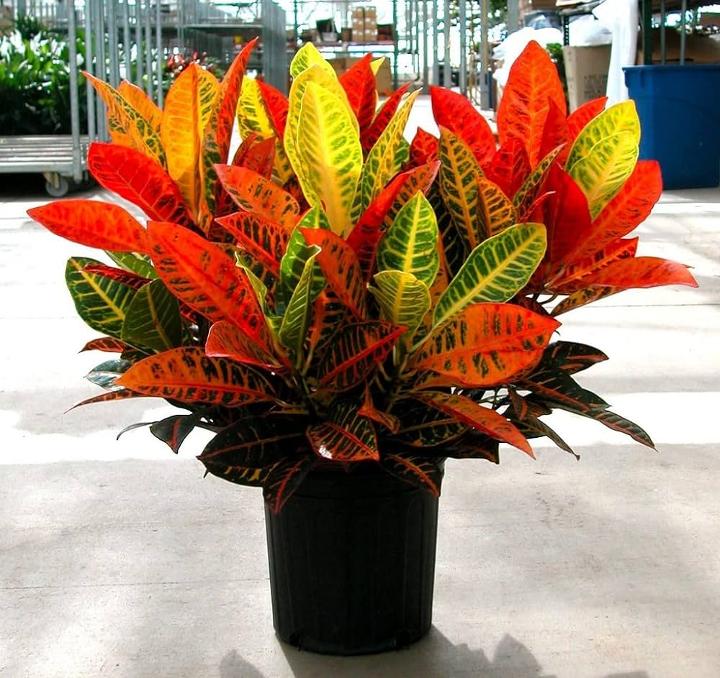
What Are The Different Types Of Multi colour croton?
1. Petra Croton
Features bright shades of red, orange, and yellow with green undertones.
2. Mammy Croton
Displays a mix of red, orange, and green hues, creating a striking appearance.
3. Gold Dust Croton
Characterized by green leaves speckled with golden-yellow spots.
4. Norma Croton
Exhibits a combination of pink, red, and green colors, providing a unique look.
5. Banana Croton
Showcases elongated leaves with a blend of yellow, red, and green tones.
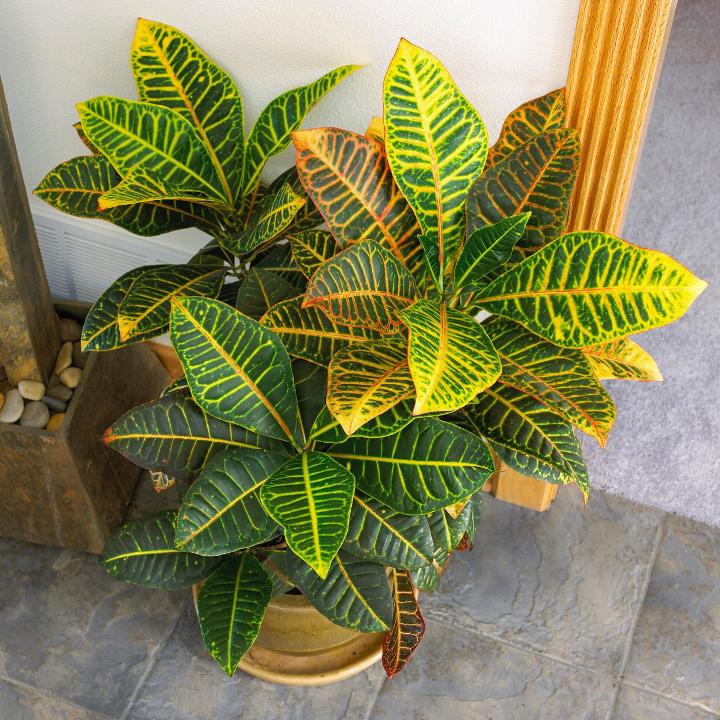
How To Care For Multi colour croton?
1. Location
Multi-color croton plants thrive in bright, indirect light. For indoor care, place them near a window with filtered sunlight. Outdoors, choose a location with partial to full sunlight. Ensure well-draining soil and water when the top inch of soil feels dry. Maintain a moderate humidity level, misting occasionally.
2. Sunshine
Multi-color croton plants thrive in bright, indirect sunlight. Place your croton where it can receive plenty of filtered sunlight. Keep the soil consistently moist but not waterlogged. Allow the top inch of soil to dry out before watering. Use well-draining soil and ensure that the pot has drainage holes.
3. Soil
Plant in well-draining soil enriched with organic matter. A mix of potting soil, perlite, and peat moss works well. Ensure the pot has drainage holes to prevent waterlogging.
4. Hydration
To care for a multi-color croton plant, ensure it receives bright, indirect light. Keep the soil consistently moist but not waterlogged, and allow the top inch to dry out between waterings. Maintain high humidity by misting the leaves or placing a humidifier nearby. Fertilize every 4-6 weeks during the growing season with a balanced liquid fertilizer. Prune occasionally to maintain shape and remove any leggy growth. Keep the plant away from drafts and cold temperatures. Regularly check for pests like spider mites and treat if necessary.

5. Nourishment
To care for a multi-color croton plant, provide bright, indirect sunlight and keep the soil consistently moist but not waterlogged. Use a well-draining potting mix and fertilize every 2-4 weeks during the growing season with a balanced liquid fertilizer. Maintain a warm environment, ideally between 60-80°F (15-27°C). Prune occasionally to shape the plant and remove any yellowing leaves. Additionally, watch for pests like spider mites and treat promptly if needed.
6. Issues
Mustard problems vary depending on the situation, but common problems include pests (such as aphids and caterpillars), diseases (such as downy mildew and cabbage roots), nutritional deficiencies, and malnutrition. This includes things like proper watering. Identifying specific symptoms can help you identify the problem and find a solution.
What Are The Benefits Of Multi colour croton
Aesthetic Appeal The plant's diverse and vivid colors enhance the visual appeal of indoor or outdoor spaces, adding a touch of tropical beauty. Low Maintenance Croton plants are generally easy to care for, making them suitable for both experienced and novice gardeners. Air Purification Like many other houseplants, crotons contribute to indoor air quality by absorbing pollutants and releasing oxygen during photosynthesis. Versatility Multi-color crotons can be grown in various settings, including gardens, pots, or as part of landscaping, providing versatility in incorporating them into different environments.

FAQs About Growing Multi colour croton
1. How to maintain multi colour croton plant?
Light Place it in a location with bright, indirect sunlight. Croton plants thrive in well-lit areas. Watering Keep the soil consistently moist but not waterlogged. Allow the top inch of soil to dry before watering again. Adjust the frequency based on the plant's specific needs. Humidity Crotons prefer high humidity. You can increase humidity by misting the plant or placing a tray of water near it. Temperature Maintain a warm environment. Crotons are sensitive to cold temperatures, so keep them away from drafts and provide a temperature range between 60-80°F (15-27°C). Soil Use well-draining soil rich in organic matter. A mixture of potting soil and perlite or sand works well. Fertilizing Feed the plant with a balanced liquid fertilizer every 2-4 weeks during the growing season (spring and summer). Reduce or stop fertilizing in fall and winter when the plant is less active.
2. What are the uses of multi colour croton plant?
Ornamental Planting multi-color crotons are primarily grown for their attractive and colorful leaves, making them excellent choices for ornamental planting in gardens, landscapes, or as potted plants. Landscaping These plants can be used to add a splash of color to landscaping projects, creating visually appealing arrangements and borders. Indoor Decor Croton plants are suitable for indoor use, adding a touch of color and tropical charm to homes or offices. They thrive in bright, indirect light. Foliage Contrast The diverse hues and patterns of croton leaves make them ideal for creating contrast with other plants, enhancing the overall visual appeal of garden beds or indoor arrangements. Container Gardening Multi-color crotons are well-suited for container gardening, allowing flexibility in placement and making them easy to move around for optimal sunlight conditions.
3. Can I grow multi colour croton plant in indoor?
Yes, you can grow a multi-color croton plant indoors. Crotons are tropical plants that thrive in bright, indirect light. Ensure the indoor environment has high humidity, and keep the soil consistently moist but not waterlogged. Consider placing the croton near a window with filtered sunlight for optimal growth and vibrant foliage.
4. Which pot is best for growing multi colour croton plant?
For multi-color croton plants, choose a well-draining pot with a diameter at least 12 inches. Use a high-quality potting mix rich in organic matter. Ensure the pot has drainage holes to prevent waterlogging, promoting a healthy root system for your croton plant.
5. Where can i shop for multi colour croton plant in india?
You can try checking local nurseries, garden centers, or online plant shops like Amazon, Flipkart, or specialized plant websites for multi-color croton plants in India. Make sure to read reviews and choose reputable sellers for quality assurance.
